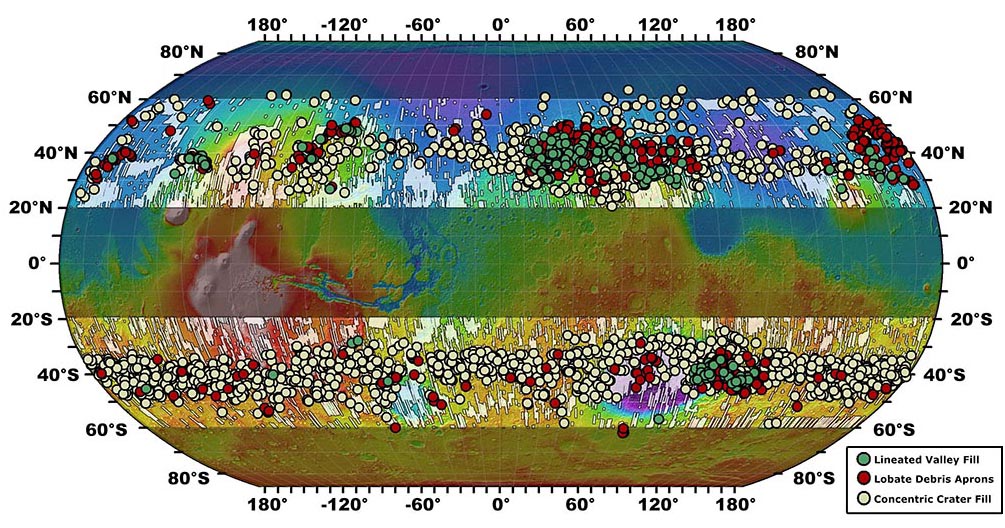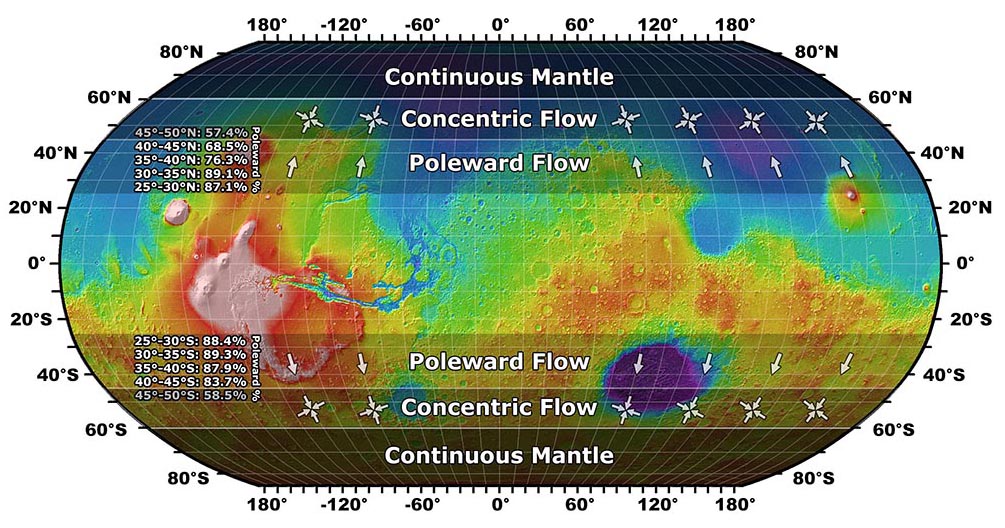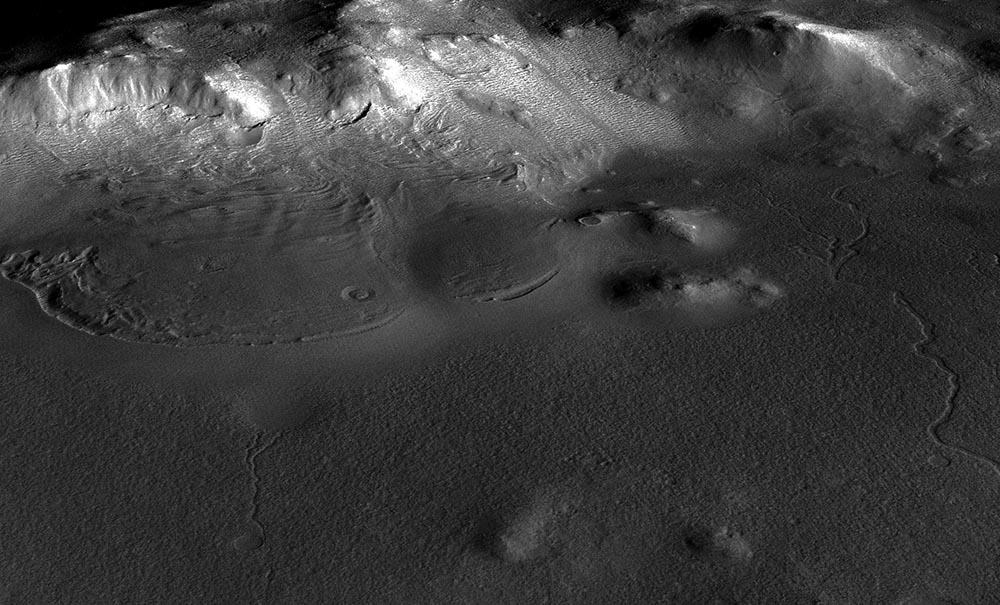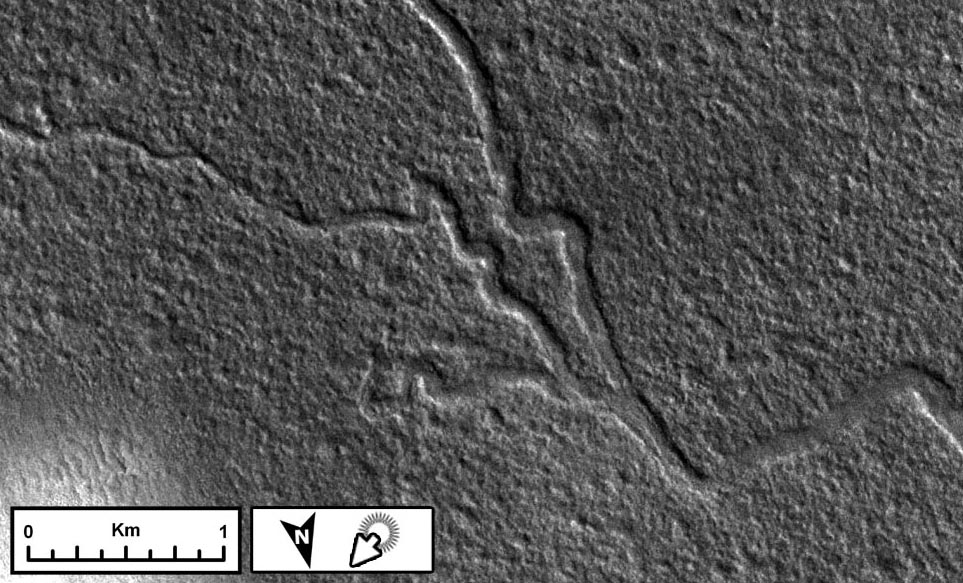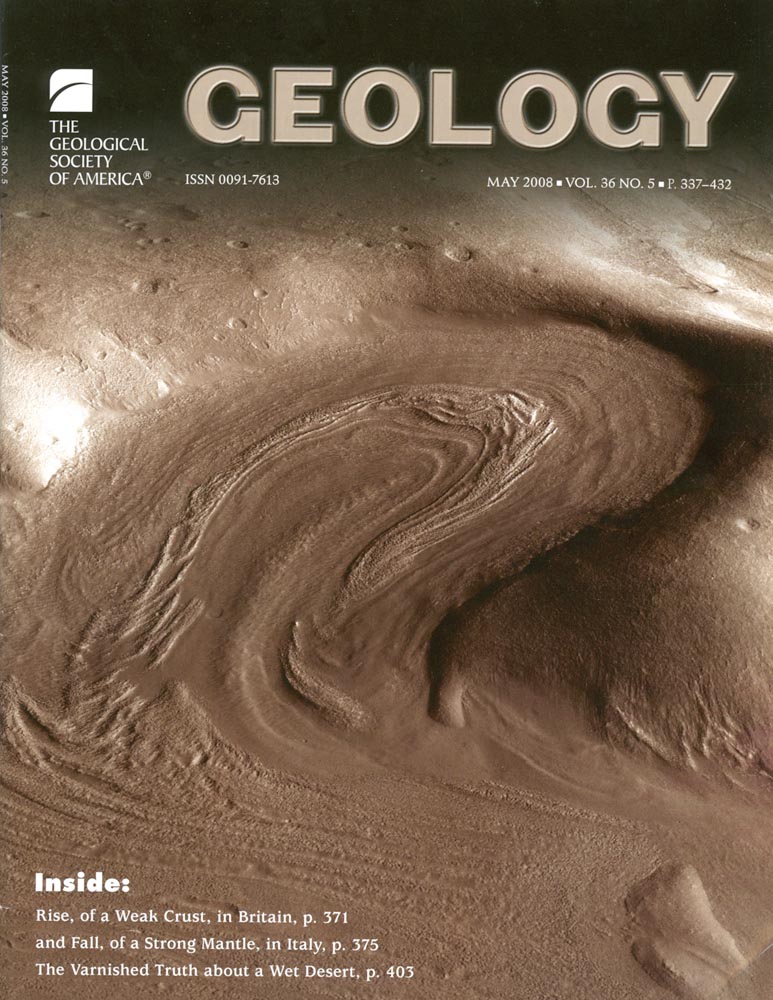Jay Dickson
jdickson@umn.edu
RESEARCH |
Ice on Mars |
The mid-latitudes of Mars host thousands of features indicative of cold-based glacial flow within the last several hundred million years. With ice not stable for long periods of time on the surface in these regions today, this indicates that Mars once had a climate more conducive to water at the surface, after the major era of fluvial erosion on Mars had ceased. * * * Impact craters that host glacial units ("Concentric Crater Fill") are valuable for evaluating the orientation of ice flow on recent Mars. Since they provide 360° of wall slopes upon which ice could accumulate, they can be used as a well-controlled experiment for determining variations in ice accumulation as a function of latitude. Our work shows that ice accumulation at mid-latitudes (< 45°) is concentrated on cold, pole-facing slopes, while ice accumulation has been pervasive on all slopes at higher latitudes (> 45°). This is symmetric in each hemisphere, indicating that ice accumulation and glacial flow has been ubiquitous at high-latitudes and concentrated at conducive locations at mid-latitudes. From Dickson et al., 2012. * * * Mars straddles the triple point of H2O, such that water could potentially exist as a solid, liquid or gas. Despite an extremely thin atmosphere that yields a pressure at the surface 1/100 that of Earth at sea level, low points on the surface do yield potential for transient liquid water. One of the lowest points on Mars, Lyot Crater, has a wealth of ice-related features at the surface and is at a low enough latitude (50°) where temperatures should surpass 0°C during peak conditions. Sinuous channels (some as long as 50 km) with broad fans are found in close proximity to debris-covered glacial features, suggesting that some of this ice did melt. Lyot Crater itself formed in the Amazonian, considerably after the main era of valley network formation on Mars. Similar young supra-glacial valleys have since been observed in almost every location where glacial landforms are observed in the mid-latitudes of Mars (Fassett et al., 2010). From Dickson et al., 2009. * * * Ice-related flow features on Mars suggest that climates in the recent past were more conducive to ice accumulation at the surface than today. While minimum estimates of ice thickness can be measured by evaluating remnant deposits, determining thickness maxima is more challenging. Multiple features in the mid-latitudes show glacier-like features that currently trend uphill, necessitating thicker ice in the past. These locations show that ~1 km of ice more than observed today were required to yield the debris morphology that is observed today. From Dickson et al., 2008 and Dickson et al., 2010.
|
